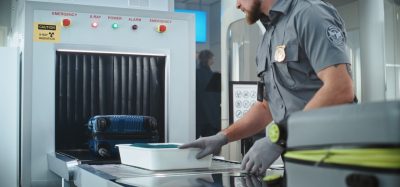The power of AI and machine learning for airport operations
Posted: 18 September 2024 | Mahmood AlSeddiqi | No comments yet
Mahmood AlSeddiqi, former Vice President of IT for Bahrain Airport Company, writes exclusively for International Airport Review on the different scenarios in which airports can leverage the power of artificial intelligence and machine learning and the fundamentals that all airports must have, to accept the new changes.


The dynamic world we are living in, and especially in an airport environment, requires seamless co-ordination of numerous operations to ensure efficiency, security and passenger satisfaction. In this era of technological advancement, artificial intelligence (AI) and machine learning (ML) stand as transformative tools offering a surplus of applications to enhance airport operations.
From optimising resource allocation to strengthening security measures and enhancing passenger experiences, AI and ML solutions are revolutionising the way airports operate, and it is time for airports to take this evolution seriously.
Airports generate data
The AI and ML technologies have the potential to analyse vast amounts of data generated within airport ecosystems, and that could be ranging from passenger flow patterns and baggage handling processes, to maintenance requirements for critical infrastructure. By using the power of AI algorithms, airports can make proactive decisions, predict potential bottlenecks, and optimise various parts in their daily operation.
Join us live: Shaping the Next Generation of Hold Baggage and Air Cargo Screening
Join us live for an insightful webinar on 11th December at 14:00 GMT, in collaboration with Smiths Detection, as we explore the strategic balance of operational efficiency, regulatory compliance, and sustainability in high-volume security environments.
This session offers a focused look into future-proofing your security strategy.
Key learning points
- Cost Reduction: Strategies to minimize bag travel time while simultaneously reducing operational costs.
- Regulatory Roadmap: Insights into the next wave of regulatory changes and their impact on future investment decisions.
- Sustainable Systems: Practical approaches to building sustainability into security systems and lowering the total cost of ownership (TCO).
- Scalable Solutions: Real-world examples of scalable systems supporting current airport growth and preparing for tomorrow.
Register now for expert insights, case studies, and actionable strategies on operational efficiency!
In addition to the above, AI can also be used for security systems to enhance threat detection capabilities, identify suspicious behaviours, and mitigate risks in real-time, thereby bolstering airport security measures. Additionally, AI-powered analytics can enable airports to tailor services and experiences to individual passenger preferences, fostering a more personalised and efficient journey, from check-in to boarding.
We can look at predictive maintenance for facility management systems in which the AI algorithms can analyse the data coming from sensors embedded in the equipment such as escalators, baggage handling systems, and HVAC systems etc.
By monitoring factors and readings from the systems like temperature, vibration, and energy consumption, these algorithms can detect patterns indicative of potential failures. We can predict when the maintenance is needed, and schedule repairs or replacements proactively, that will give us an advantage of reducing downtime and avoiding costly disruptions.
Enhancing security
Security and screening could be an area of enhancement, as we can use machine learning algorithms that can be trained on large datasets of past security incidents we faced, to recognise patterns associated with prohibited items or suspicious behaviour. These algorithms can analyse real-time data from security cameras, metal detectors, and other screening equipment installed in the airport to flag potential threats automatically. Additionally, AI can assist human security personnel by providing real-time alerts and highlighting areas that may require closer inspection. We can also use AI power in the facial recognition system we have to compare images of passengers’ faces captured at various checkpoints throughout the airport against a database of known individuals, such as registered travellers or persons of interest. By automating the identity verification process, these systems can enhance security and streamline passenger processing, reducing wait times and improving the overall flow of passengers through the airport.
Baggage efficiency and analysis
Moving to baggage handling, AI can optimise baggage handling systems by tracking individual bags using radio frequency identification (RFID) tags or barcode scanners. Machine learning algorithms can analyse historical data to predict baggage flow, anticipate congestion points, and identify potential issues such as misplaced or mishandled luggage. By improving the efficiency of baggage handling, we can reduce the risk of delays and lost baggage, leading to a smoother travel experience for passengers.
Staying with customer experience, the use of AI can also be utilised with chatbots, and virtual assistants that can provide personalised assistance to passengers throughout their journey. These virtual assistants can answer common questions, provide real-time updates on flight status and gate changes, and offer recommendations for airport amenities and services. By automating routine tasks and providing timely information, AI-powered assistants can enhance the passenger experience and reduce the workload on airport staff.
Resource allocation
Airport operation can also be enhanced and improved tremendously, for example we can use machine learning to analyse historical flight data, weather forecasts and air traffic patterns to optimise flight schedules and routes. With this we can identify opportunities to minimise delays, reduce fuel consumption, and optimise airspace usage. By making more informed decisions, airlines and air traffic controllers can improve the overall efficiency of air travel, benefiting both passengers and the environment. Staying with airport operation optimisation, we also can use AI to analyse our passenger data traffic, flight schedules and resource availability to optimise the allocation of airport resources. For example, these algorithms can dynamically assign gates and check-in counters based on demand, optimise staffing levels to match passenger volumes, and adjust security screening procedures to minimise wait times.
By optimising resource allocation, our airports can be improved operational efficiency and reduce costs while providing a better experience for passengers.
To summarise the above, I would say that there are fundamentals for AI and machine learning that nobody can ignore or work without; those foundations are data collections, data processing, the right selection for the algorithms, the way we train our model with the above-mentioned foundations, the right integration approach with variance systems within your environment to start analysing, prediction etc. and finally we need to have close monitoring of the integration and keep learning from it to improve it more and more.


The International Airport Summit is open for registration!
Date: 19 – 20 November 2025
Location: JW Marriott Hotel Berlin
At our flagship event of the year, we will dive into the future of airport operations, with expert-led sessions on passenger experience, innovative smart technologies, baggage handling, airside operations, data, security, and sustainability.
This is where global airport leaders come together to share insights, challenges, and real-world solutions.
Limited complimentary passes are available for eligible professionals – first come, first served!
Issue
Related topics
Airport development, Artificial intelligence (AI), Baggage handling, Digital transformation, Innovation, New technologies, Passenger experience and seamless travel, Security


















